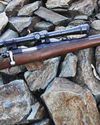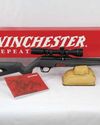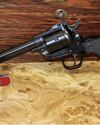It is a well-known fact among gun collectors that a fine gun from years ago is more likely to come down to us in good condition than a cheap gun from the same era.

This is not an absolute rule. Some fine guns do fall into the wrong hands, and some inexpensive guns luck their way through a succession of owners who actually care about them. But generally, if a gun starts out as an aristocrat, it will still be one a century later.
There are several possible reasons, but the one that interests me is the question of aesthetics, and how an aesthetically pleasing gun is better looked after. It’s not just money. If something is pleasing to the eye, we tend to try to keep it that way. If it’s a pleasure to hold, we treat it tenderly. If we like to run our hands over it, we will try to avoid scrapes and gouges.
The word “aesthetic” comes from the Greek language and pertains to that which is perceptible to the senses. In recent centuries, it has come to mean “beauty,” and generations of German and English philosophers have wrangled over this narrowing of its meaning. Originally, however, it pertained to all the senses: sight, sound, fingertips and, in the case of objects the Practicality of aesthetics that were handled and used, just how well they lent themselves to that.
This story is from the January - February 2017 edition of Rifle.
Start your 7-day Magzter GOLD free trial to access thousands of curated premium stories, and 9,000+ magazines and newspapers.
Already a subscriber ? Sign In
This story is from the January - February 2017 edition of Rifle.
Start your 7-day Magzter GOLD free trial to access thousands of curated premium stories, and 9,000+ magazines and newspapers.
Already a subscriber? Sign In

CIMARRON .32-20 Short Rifle & Carbine
In the heyday of Winchester Repeating Arms Company lever guns, it offered muskets, standard rifles, short rifles and saddle ring carbines.

Remington's Model 722 and .222 Cartridge
It's easy enough to define what a varmint is, those pesky critters that tear up pastures, flower beds and all kinds of expensive crops people need for various reasons - most importantly, to make a living and/or something with which to feed themselves.

Coyote Bullets
What is Best for You?

Remington's 5mm Rimfire Magnum
Shooting a Classic

Winchester's New Wildcat
The Ultralight Rimfire Varmint Rifle

.223 Remington from .30-30 Winchester?
Multitasking for Varmints

LOADS FOR A .22 TCM
The .22 TCM first appeared commercially in 2012, chambered in a Rock Island Armory 1911-style handgun.

Everybody Loves Velocity
The 4,500-fps WSSM Project

A BOLT-ACTION FRANCHI 224 VALKYRIE
Testing New Loads

.22 Winchester Magnum Rimfire
Shooting Revolvers